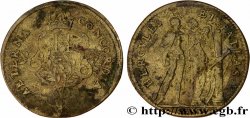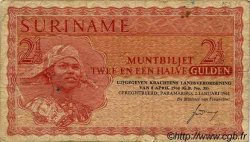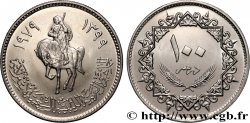MONNAIES 18 (2003)
Startpreis : 230.00 €
Schätzung : 380.00 €
Erzielter Preis : 230.00 €
Anzahl der Gebote : 1
Höchstgebot : 1 001.00 €
Startpreis : 230.00 €
Schätzung : 380.00 €
Erzielter Preis : 230.00 €
Anzahl der Gebote : 1
Höchstgebot : 1 001.00 €
Type : Médaille uniface, Ar 28, pour une messe en Arles
Datum: 1595
Metall : Silber
Durchmesser : 28 mm
Gewicht : 8,78 g.
Seltenheitsgrad : R3
Vorderseite
Titulatur der Vorderseite CESTE/ HEVRE. A ESTE/ FAICTE. DE. LOV/ MOSNE. DES. BIEN/ FACTEVR. S DE LA/ VILLE. DARLES/ 1595.
Beschreibung Vorderseite Légende en six lignes dans le champ.
Rückseite
Kommentare
De gravure assez malhabile avec des espaces trop serrés en fin de lignes et le point après BIENFACTEVRS placé avant la S finale. pourrait avoir été réalisé à partir d’un demi-franc qui aurait été aplati et martelé.
Cette médaille a probablement servi de “méreau”, c’est-à-dire qu’elle servait à contrôler l’assiduité des chanoines aux offices. Chaque bénéficiaire recevait probablement au début des offices un exemplaire semblable qu’il pouvait ensuite à sa guise échanger contre des espèces ou porter à l’hôtel des monnaies le plus proche. Ce document du XVIe siècle, an argent, est réalisé de façon artisanal est de la plus grande rareté et peut-être un témoignage unique. On note de façon étonnante que l’année 1595 est celle qui voit le ralliement de la ville à Henri IV. Il est probable que cette médaille est un témoignage des absolutions réalisées dans la ville en octobre 1595.
A rather clumsy engraving with spaces that are too tight at the end of lines and the period after BIENFACTEVRS placed before the final S. It could have been made from a half-franc that had been flattened and hammered. This medal probably served as a “méreau”, that is to say, it was used to monitor the canons’ attendance at services. Each beneficiary probably received a similar example at the start of services, which they could then exchange for cash or take to the nearest mint at their leisure. This 16th-century document, made of silver, is handcrafted and is extremely rare and perhaps a unique testimony. Surprisingly, it is noted that the year 1595 saw the rallying of the city to Henry IV. It is likely that this medal is a testimony to the absolutions carried out in the city in October 1595
Cette médaille a probablement servi de “méreau”, c’est-à-dire qu’elle servait à contrôler l’assiduité des chanoines aux offices. Chaque bénéficiaire recevait probablement au début des offices un exemplaire semblable qu’il pouvait ensuite à sa guise échanger contre des espèces ou porter à l’hôtel des monnaies le plus proche. Ce document du XVIe siècle, an argent, est réalisé de façon artisanal est de la plus grande rareté et peut-être un témoignage unique. On note de façon étonnante que l’année 1595 est celle qui voit le ralliement de la ville à Henri IV. Il est probable que cette médaille est un témoignage des absolutions réalisées dans la ville en octobre 1595.
A rather clumsy engraving with spaces that are too tight at the end of lines and the period after BIENFACTEVRS placed before the final S. It could have been made from a half-franc that had been flattened and hammered. This medal probably served as a “méreau”, that is to say, it was used to monitor the canons’ attendance at services. Each beneficiary probably received a similar example at the start of services, which they could then exchange for cash or take to the nearest mint at their leisure. This 16th-century document, made of silver, is handcrafted and is extremely rare and perhaps a unique testimony. Surprisingly, it is noted that the year 1595 saw the rallying of the city to Henry IV. It is likely that this medal is a testimony to the absolutions carried out in the city in October 1595








 Berichten über einen Fehler
Berichten über einen Fehler Die Seite drucken
Die Seite drucken Teilen meiner Auswahl
Teilen meiner Auswahl Stellen Sie eine Frage
Stellen Sie eine Frage Einlieferung/Verkauf
Einlieferung/Verkauf
 Details
Details















